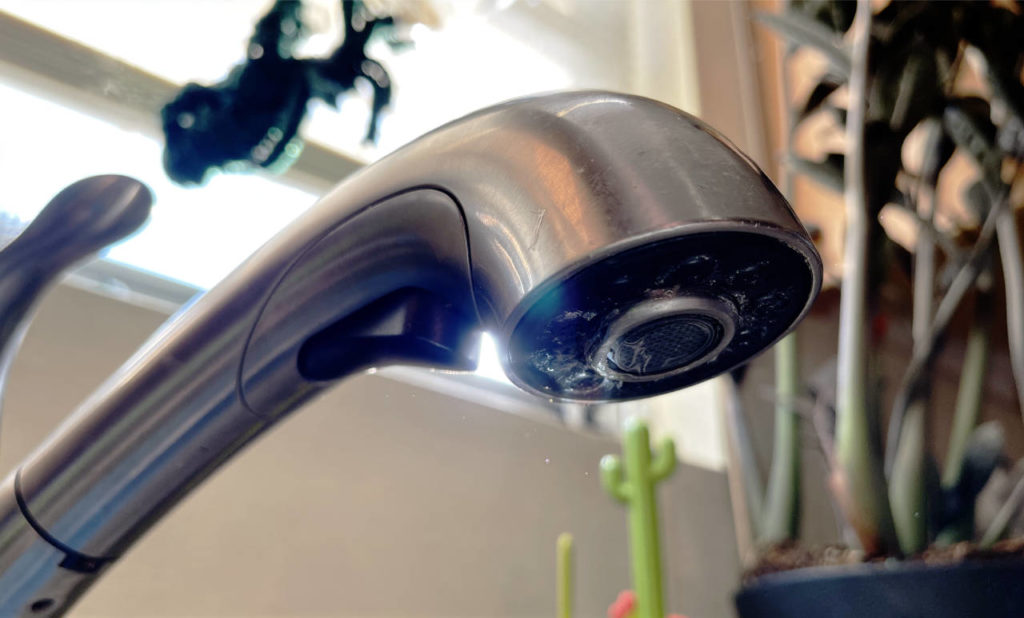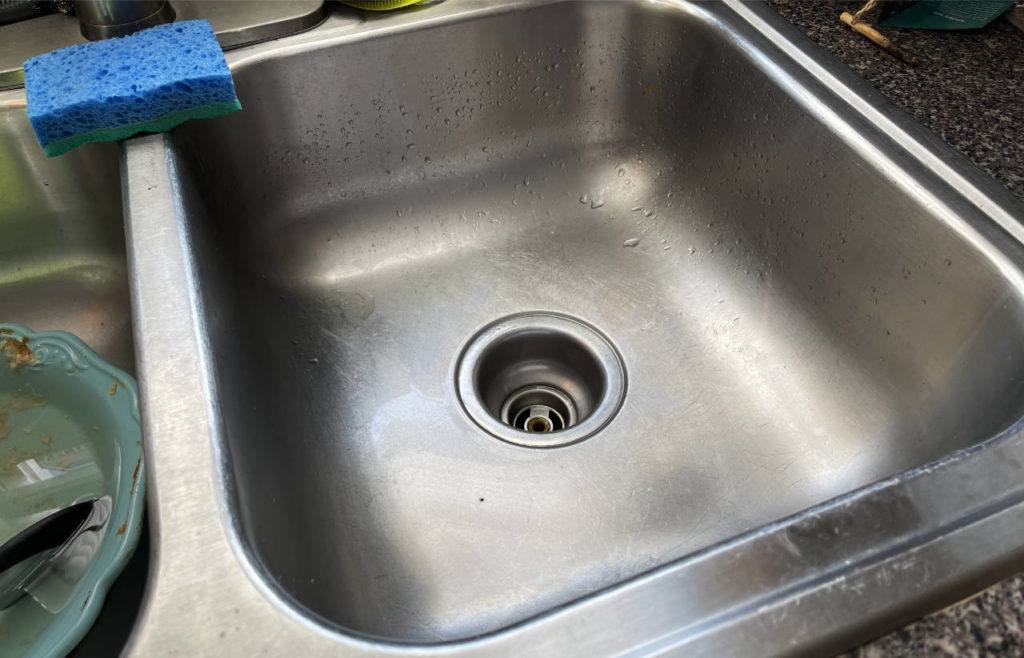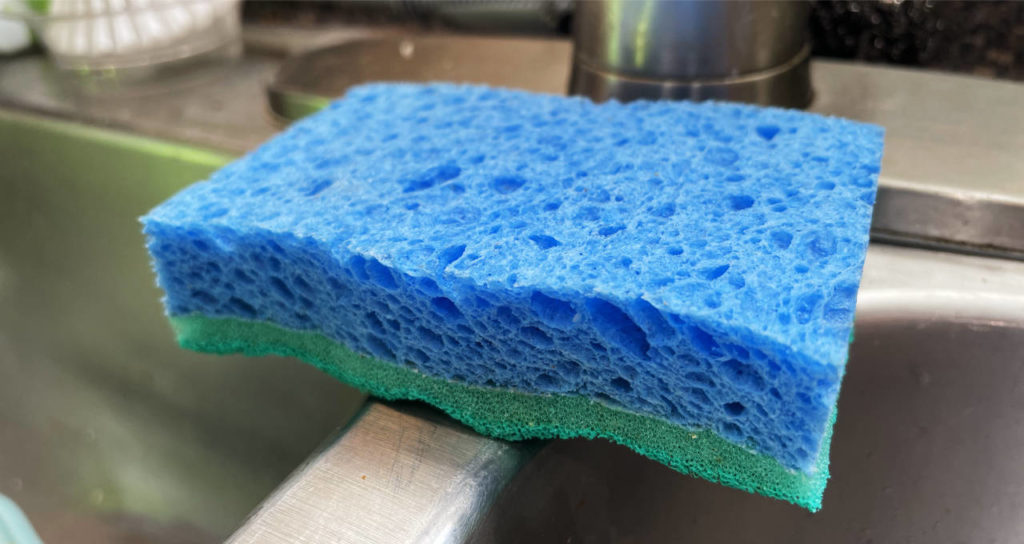Floors and countertops are things most people think to clean regularly, but pathogens find their way into a variety of other frequent kitchen spots.
In today’s post, we’ll explore some of the top places germs can reside and build up — and what you can do about it.
1. Kitchen Sink Faucets

We might give the faucet a quick wipe down while cleaning up the sink, but it tends to be more about removing gunk or dried water droplets than for disinfection. That, and most people are cleaning the handle part of the faucet only.
The handle is certainly important since it’s where our hands go, but the spout where the water comes out is just as important and is often neglected.
Because the faucet spout is frequently exposed to water and exists in a warm environment, germs and even black mold can build up there over time if left alone. That means that all water exiting the faucet is contaminated, which could be making you sick without even realizing.
2. The Kitchen Sink Itself

This is another area that often gets neglected. Some degree of cleaning happens while washing dishes in the sink, but after that it’s not uncommon for someone to give the sink surfaces a quick once-over to remove food stuck to them, dried water spots, or discolorations.
But the surface of the lower sink areas, especially around the drain, are where bacteria loves to grow.
Some contractors even recommend occasionally spraying bleach into your drains and letting it sit for a few minutes before rinsing out. This, they say, helps prevent mold, germs, and even gnats from flying around your kitchen.
In the case of gnats, people frequently ask how they get into the kitchen. “I’m not leaving the back door open for periods of time or anything,” they say.
Experts say gnats like to lay their eggs in sink drains, which hatch and then come up into the kitchen. Cleaning your sink occasionally with bleach kills these eggs.
3. Cloth Towels

Towels are one of the most commonplace things in people’s kitchens, usually hanging on the oven handle or fridge door handle. We use them to dry dishes, wipe down counters, and dry our hands.
The Cleveland Clinic says that doing this can be risky. Even when we wipe down our counters, there can still be germs on it that disinfectants haven’t killed yet. Those germs get into the towel and then onto our hands as we dry them off.
It’s unfortunate, since quite often we’re drying out hands off just after washing them, not realizing that we’re potentially loading them up with germs again from the towel.
Same goes for drying dishes with the towel.
Experts recommend using paper towels to wipe down countertops instead, or letting the counters air dry. Air drying is most ideal, they say, because it gives disinfectants more time to kill all the bacteria.
If you have a drying mat for your dishes, you can simply leave them on that to air dry instead of using a towel. Just make sure to wash and swap out the drying mat regularly as well for the same reason.
Or, if you’re going to use a towel to dry your dishes, use a separate towel for that and what you use to dry your hands.
4. Your Sponge

Since sponges are always damp and don’t always fully dry out before they’re used again, they’re a breeding ground for bacteria. In fact, a study mentioned in a Today article said that 15% of sponges randomly tested contained active salmonella.
Yikes!
Same as before wish using a dirty towel to dry clean hands, imagine the disappointment of washing dishes with a sponge that’s dirtier than you realize, loading “clean” dishes up with germs as you put them away.
Regularly microwaving sponges for 1-2 minutes can alleviate a lot of this. We’ve tested this one ourselves and can confirm: smelly sponge in for 2 minutes, out comes a steaming sponge with no odor, one that is also fluffier like it began out of the package.
That doesn’t mean you can use that sponge forever, but regularly disinfecting it definitely extends its safe lifespan.
5. The Coffee Pot Reservoir

It’s easier to remember to clean out the filter and the pot/decanter itself, but the reservoir where one pours water for the brew can also breed bacteria because it’s dark and damp frequently.
Washing it wish soap can be tricky — both because of the tight space and the soapy taste that might be left behind even with a thorough rinse.
Experts recommend using white vinegar. You can mix it with water in a 50/50 solution. Pour enough in there for a full pot and let it sit for 20-30 minutes. This allows the vinegar to thoroughly kill germs and remove buildup.
Then, run a brew cycle through so the vinegar also goes through the whole system to clean it as well.
Afterward, run 1-2 brew cycles of pure water through the coffee maker to remove the vinegar smell and taste that might be left over.
Do this every 30-40 brews, experts say.

